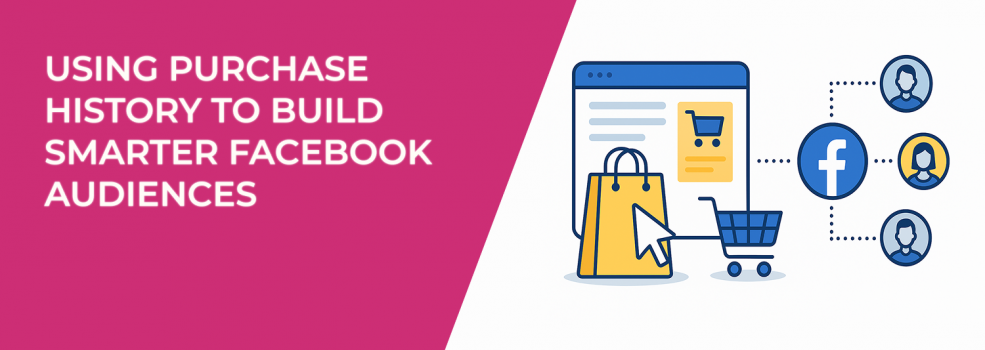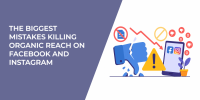Most advertisers know that Facebook Ads can be powerful. But what separates good campaigns from great ones often comes down to how you define your audiences. Many marketers still rely on broad targeting or demographic filters. That’s a starting point, but if you want stronger results, you’ll need to go deeper. One of the best ways to do that is with purchase history.
Purchase data reveals what people value enough to buy. When you use that information to build smarter Facebook audiences, you’re working with proof — not assumptions. If you’re new to targeting, it helps to revisit the fundamentals in Facebook Ad Targeting 101: How to Reach the Right Audience. From there, purchase history can take your strategy to a much higher level.
Segment Customers by Purchase Value
Not all customers are equal. Someone who’s spent $500 across multiple purchases should not be in the same audience as someone who made a single $20 order. Segmenting by purchase value helps you match ad spend with customer potential — ensuring you aren’t wasting budget on the wrong people.
Scenarios and examples:
-
A luxury skincare brand creates a high-value segment of customers who have spent over $200 in the last 90 days. They use this audience for VIP campaigns offering early access to limited-edition products.
-
A subscription box service identifies low-value customers who canceled after one box. They serve these users reactivation ads with a “first month free” offer to win them back.
-
An electronics retailer excludes bargain hunters who only buy discounted items during Black Friday. This prevents expensive ads for premium gear from being shown to people unlikely to convert.
If you want more clarity on how to structure this process, check out How to Define a Target Audience for Marketing. It breaks down the key steps marketers often overlook.
Re-Engage Lapsed Customers
Every brand has customers who disappear after a single purchase. Maybe they forgot about you. Maybe they moved on to a competitor. Purchase history helps you identify who they are, when they last interacted, and what they bought. With this, you can build retargeting campaigns that bring them back before they forget you entirely.
Scenarios and examples:
-
An online fashion retailer builds a segment of buyers who haven’t purchased in six months. They launch a “We miss you” campaign featuring a 15% discount and photos of trending styles.
-
A flower delivery service identifies seasonal shoppers who only ordered on Valentine’s Day last year. Two weeks before Valentine’s Day, those same customers see reminder ads for special bouquets.
-
A SaaS platform notices many users subscribed for one month but didn’t renew. They create retargeting ads highlighting case studies and social proof to remind users of the value.
If you’re unsure how to get started, here’s a detailed guide on how to set up Facebook retargeting. Retargeting is one of the fastest ways to make purchase history actionable.
Build High-Quality Lookalike Audiences
Lookalike Audiences are one of Facebook’s most powerful tools for scaling. But they’re only as effective as the seed data you use. If you upload your entire customer list, Facebook might find a mix of people who don’t represent your best buyers. When the seed data comes from purchase history, you help Facebook find new users who actually behave like your most profitable customers.
Scenarios and examples:
-
An online fitness brand builds a Lookalike Audience using only their top 20% of repeat buyers. This helps attract new customers more likely to stick with long-term memberships.
-
A digital course creator uploads a list of students who purchased high-ticket courses and builds a Lookalike Audience. The result? New leads who are already comfortable investing in premium content.
-
A food subscription brand uses a list of monthly recurring subscribers instead of one-time snack box buyers. This ensures their Lookalike campaigns prioritize people who value consistency.
If you’re still debating which approach works better, read Custom vs Lookalike Audiences: What Works Best for Facebook Campaigns?. It explains when to use each type — and how to avoid common mistakes.
Keep Refining with Fresh Data
Purchase history isn’t static. Customers shift their interests, increase their spending, or drop off entirely. A one-time buyer today could become a repeat VIP six months from now — and if you don’t refresh your lists, you’ll miss those signals. That’s why smart advertisers update their data regularly and test new audience splits.
Scenarios and examples:
-
An e-commerce store updates their Custom Audience every 30 days, ensuring new customers are added to retargeting campaigns immediately.
-
A brand tests two new segments: buyers who used discount codes and buyers who paid full price. Messaging is adjusted accordingly — discounts for one, exclusivity for the other.
-
A travel company removes inactive audiences every quarter to keep budgets focused on engaged buyers. This prevents wasted impressions on people who haven’t booked in years.
Keeping your audiences fresh aligns closely with strategies top e-commerce brands use in behavior-based Facebook targeting. The more frequently you refine, the stronger your targeting becomes.
Final Thoughts
Many advertisers chase hacks, but the best results often come from data you already own. Purchase history is a crystal-clear signal of intent. By segmenting buyers, re-engaging lapsed customers, and building smarter Lookalike Audiences, you can make your Facebook campaigns more efficient and profitable.
If you want to spend less and convert more, start by leveraging the one thing that never lies — what people actually buy.

